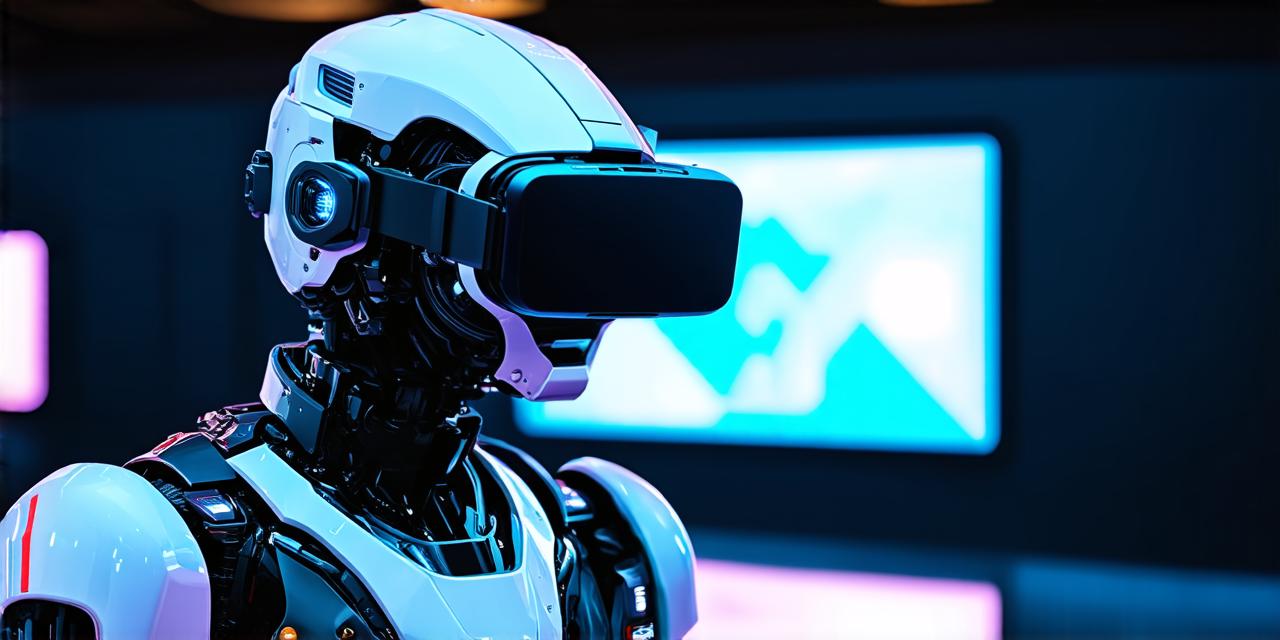The Intersection of VR and AI: Applications and Use Cases
Virtual reality has long been used to create simulations for training and education purposes. For instance, medical students can practice surgeries in a virtual environment, while pilots can hone their skills in a simulated cockpit. However, with the advent of AI, VR systems are becoming more sophisticated and capable of handling complex tasks.
For example, AI-powered VR systems can be used to train autonomous vehicles, enabling them to learn from real-world scenarios and improve their performance over time.
Another area where VR and AI intersect is in the field of gaming. AI can be used to create more realistic and engaging characters, environments, and gameplay mechanics. For instance, in the game “No Man’s Sky,” the developers used a neural network to generate procedurally generated planets, which added an infinite amount of variety to the game’s universe.
One of the most promising applications of VR and AI is in the field of therapy. Virtual reality can be used to create immersive simulations that help patients overcome phobias, manage pain, and improve their overall well-being. AI can also be used to personalize these simulations, tailoring them to each patient’s unique needs and preferences.

A study published in the Journal of Medical Internet Research found that VR exposure therapy was as effective as in vivo exposure therapy for treating anxiety disorders like post-traumatic stress disorder (PTSD).
The Role of AI in VR Development
While AI is already being used to enhance VR systems, it also plays a crucial role in the development process itself. For instance, AI algorithms can be used to optimize the performance of VR applications, ensuring they run smoothly and efficiently on a range of hardware configurations.
AI can also be used to analyze user data, providing insights into how users interact with VR systems and helping developers create more engaging and immersive experiences.
Another important application of AI in VR development is in the field of content creation. AI-powered tools can be used to generate 3D models, textures, and animations, which can then be integrated into VR applications. This can save time and resources for developers, enabling them to create more complex and visually stunning experiences without having to rely on expensive specialized software or human artists.
The Future of VR and AI: Challenges and Opportunities
Despite the impressive progress made so far, there are still many challenges that need to be overcome before we can fully realize the potential of VR and AI. For example, VR systems still suffer from motion sickness, which can be a major barrier to adoption for some users.
Additionally, the cost of VR hardware and software remains relatively high, limiting its accessibility to a wider audience.
On the other hand, there are also many opportunities for innovation and growth in this field. As VR technology continues to improve, we can expect to see even more sophisticated and immersive applications of AI in the future. For instance, AI-powered VR systems could be used to create realistic simulations of historical events or scientific experiments, providing users with a unique and engaging way to learn about the world around them.
FAQs
What are some examples of real-world applications of VR and AI?
Virtual reality and artificial intelligence can be used together in various industries. For instance, VR is being used in healthcare to create immersive simulations for medical training, while AI is being used to generate realistic graphics and animations for virtual reality applications. In the field of gaming, AI is being used to create more engaging characters and environments, and VR is being used to enhance the overall experience.
What are the challenges facing VR and AI development?
There are still many challenges that need to be overcome before we can fully realize the potential of virtual reality and artificial intelligence. For example, VR systems still suffer from motion sickness, and the cost of VR hardware and software remains relatively high. Additionally, developing AI algorithms that can accurately interpret user data and make personalized recommendations is still a major challenge in the field of AI.
How do VR and AI work together?
Virtual reality provides a platform for artificial intelligence by offering an immersive environment for users to interact with. AI can enhance the capabilities of VR systems by providing personalized content, optimizing performance, and analyzing user data.
